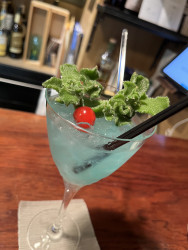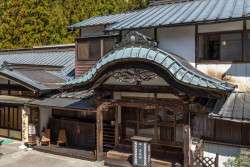
August 29, 2013
Laughter in the Heart of Tokyo
A crash course in comedy at the Asakusa Toyokan
By Metropolis
Originally published on metropolis.co.jp on August 2013
Laughing Lingo
☛ 芸人(げいにん)Geinin
Comedic entertainer
☛ 漫才(まんざい)manzai
Comedic style of tsukkomi (straight man) and boke (fool)
☛ 漫談(まんだん)mandan
Solo comedian
☛ コント konto
Skit-based comedy
☛ 曲芸(きょくげい)kyokugei
Acrobatic act (sometimes including juggling and other skills)
☛ 演芸(えんげい)engei
Term for the various styles of performance meant to entertain the masses
☛ 色物(いろもの)iromono
Entertainment at a yose other than rakugo or storytelling
☛ おち ochi
Punch line or “drop” in a comedic routine
☛ ネタ neta
Comedic routine, scenario
☛ 手品(てじな)/ マジック tejina / majikku
Magic act
There might be nothing funny about Asakusa’s iconic Sensoji Temple, but just a few minutes away from the tourist mecca lies another mecca of comedy: the Toyokan, a yose theater featuring the most hilarious characters this side of Osaka.
Along with the Asakusa Engei Hall in the same building, the Toyokan has been bringing the laughs since the 1860s. Yose (寄席) comes from the Japanese characters for the verb yoseru (to get together) and seki (seats). Meaning something like vaudeville in English, it hosts a range of acts including rakugo (classical comic storytelling), iromono (variety acts including magic, juggling, paper cutting, acrobatics, and more) and manzai.
Manzai is a comedic style depending on humorous back-and-forth between the fool (boke) and straight man (tsukkomi). The boke (bokeru = to go senile) takes the discussion in absurd directions, while the tsukkomi makes sharp digs (tsukkomu = to dig in) to bring things back to reason. Modern manzai rose in popularity in the 1930s with several boom periods after World War II. Although known as an Osaka invention, Tokyo manzai is alive and well at the Toyokan.
The Toyokan and its building have gone through multiple transformations since converting postwar from cinema to something a little seedier. Opening in 1951, the France Za strip theater featured comedic skits and performances between shows. The popularity of these skits prompted the opening of the Toyokan Gekijo in 1964 with the France Za pushed up to the upper floors. “Beat” Takeshi Kitano, comedian and world-renowned movie director, started at the Toyokan as an elevator boy around this time. After the France Za shut down in 1999, the Asakusa Toyokan reopened in 2000 with the Toyokan devoted to manzai comedy and the 1st-floor Asakusa Engei Hall providing rakugo. Not forgetting its varied history, the Toyokan’s official full name today is the Asakusa France Za Engeijo Toyokan.
SEEING STARS
With the wide variety of acts that share the stage at the Toyokan it’s hard to choose whom to introduce, but here is a sampling of some acts that one should catch. Don’t let the unfamiliarity of their names turn you off, those at the Toyokan and other yose theaters are truly masters of the art of comedy with careers decades long.
Keiko Utsumi
Any discussion of Asakusa manzai has to begin with Keiko Utsumi. With an unparalleled history on the stage of over seventy years, Keiko-shisho (a term of respect reserved for masters of an art) still performs regularly at the Toyokan at the age of 91. Don’t let her age fool you. Utsumi’s wit is as sharp as comedians more than half her age and she is a regular Tweeter (@utumikeiko). Keiko Utsumi has been performing solo and with other guests since the passing of Yoshie, her comedy partner, in 1997. Utsumi added another chapter to her interesting life when she married for the first time at the age of 77 (in 1999) to a fan who would later become her manager.
Junko Ashita
Unbelievably, at 80 years-old, Junko Ashita is not the eldest female comedian in the Manzai Kyokai (an organization of performers at the Toyokan)—but that doesn’t get her down. Originally part of the famous duo Ashita Junko Hiroshi, Ashita still performs regularly at the Toyokan and other yose in the area. She also sometimes teams up with Keiko Ustumi in the duo “AKB48.” A for Junko Ashita, K for Keiko Ustumi, B for baba (old woman in Japanese)—and 48 for the number of wrinkles on the two performers.
Knights
This duo is probably the most popular act to come out of the Toyokan in the past decade. Regulars on television as well as on stage, partners Nobuyuki Hanawa and Nobuyuki Tsuchiya have perfected the straight man and fool dynamic of manzai. With Hanawa an avid yakyu fan, routines often focus on baseball and the Yomiuri Giants. You’re bound to be entertained—even if you only catch half the jokes in their routine.
U-ji Koji
Another younger duo, U-ji Koji hails from Tochigi, just north of Tokyo. The duo first found an audience when member Takuro Mashiko’s trademark phrase, “Gomen ne! Gomen ne!” (“Sorry!”) took off as a catch phrase of the moment a few years ago. U-ji Koji can also be seen regularly on the small screen.
BRANCHING OUT
A selection of other acts to catch at the Toyokan.
Piroki: With a cartoonish appearance and a “guitarlele” (a cross between a guitar and a ukulele), comedian Piroki always brings down the house with his trademark song and low-key self-deprecating humor.
Oshidori: This husband-and-wife duo is a comedy act that defies definition. While Ken bends colored wires into interesting shapes trying to please and entertain his wife and the audience, Mako plays her accordion, sings and bosses her husband around.
Shotaro Yanagiya and Aozora Kirinji: These two are masters of kamikiri, the art of cutting paper at the request of audience members into beautiful two-dimensional works of art. If you’re lucky you may even be able to bring home a beautiful work produced during the act. Kamikiri dates back to the late 1800s as a way of entertaining audiences at yose and beyond.
Caramel Machine: A rare combination of comedic flare and magic. Successfully mixing manzai comedy and magic, they have won awards at magic shows in the United States.
Geinin the Blast: A taste of Edo with a bit of Tokyo mixed in. Katsura Denbei, with his trumpet, and Tsunemune, with his juggling skills, entertain audiences with a range techniques that are both new and traditional.













